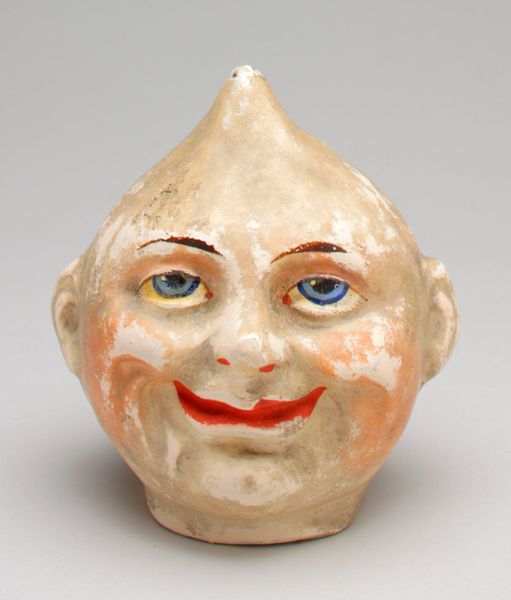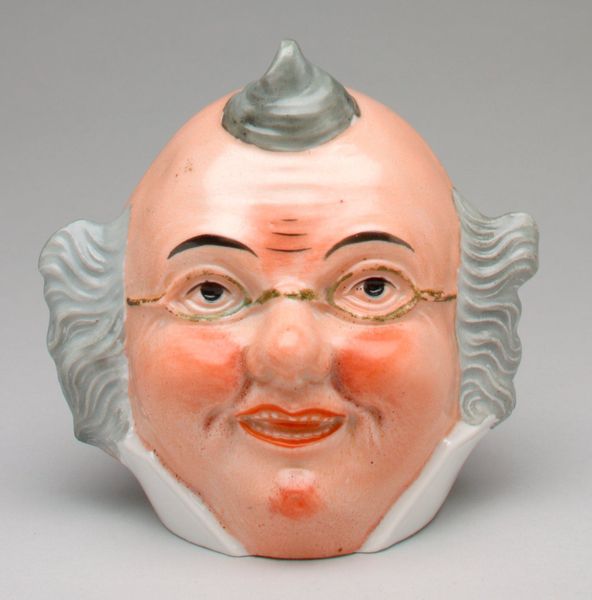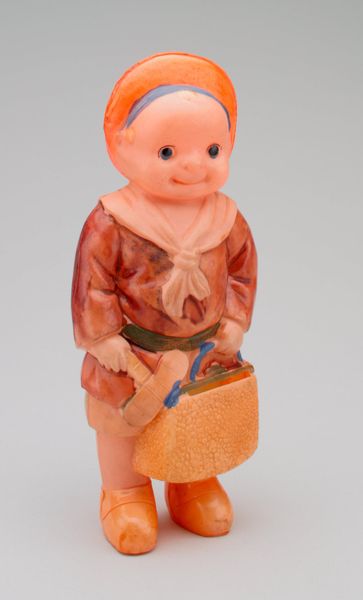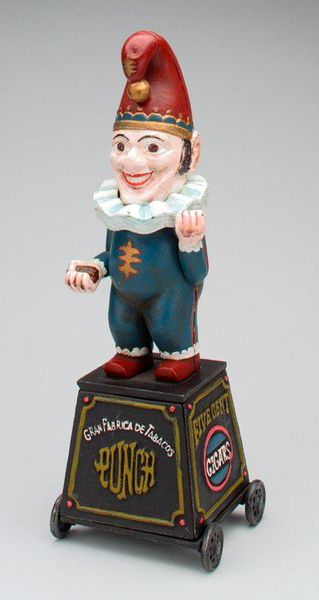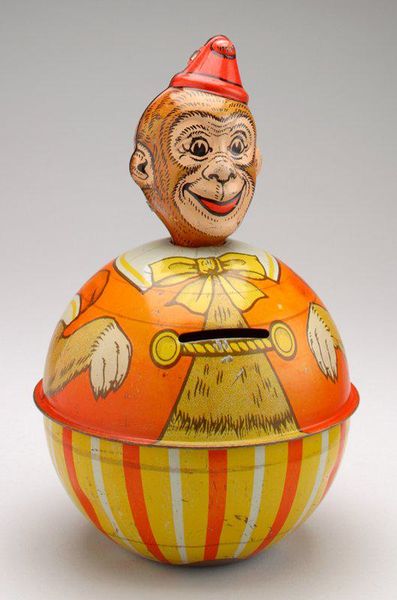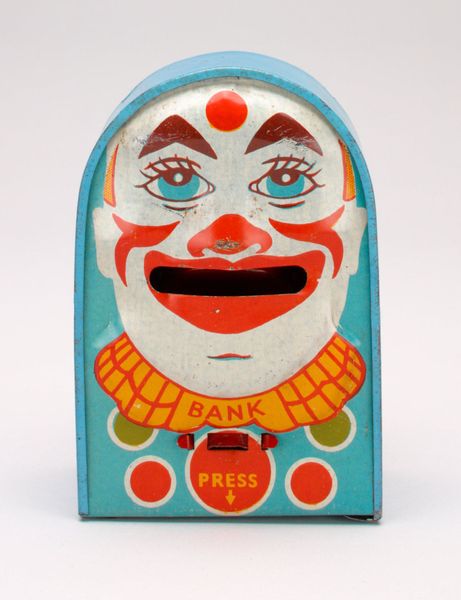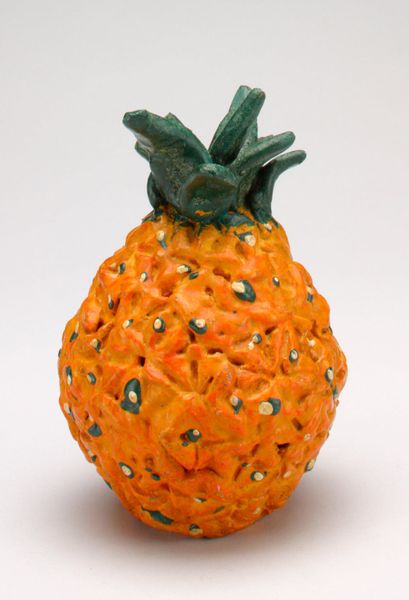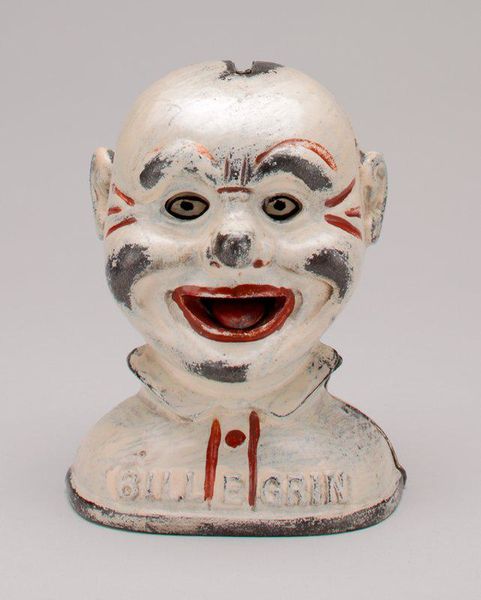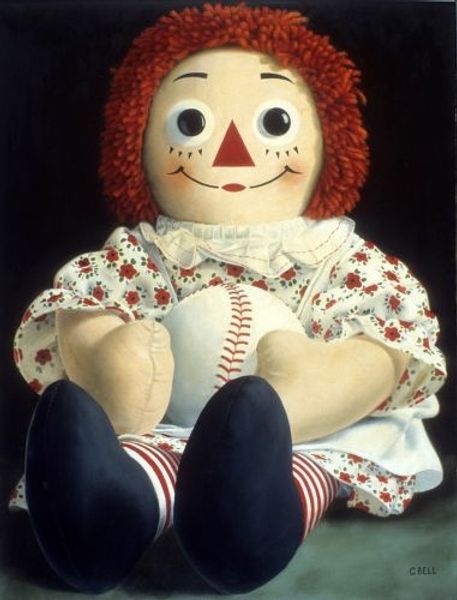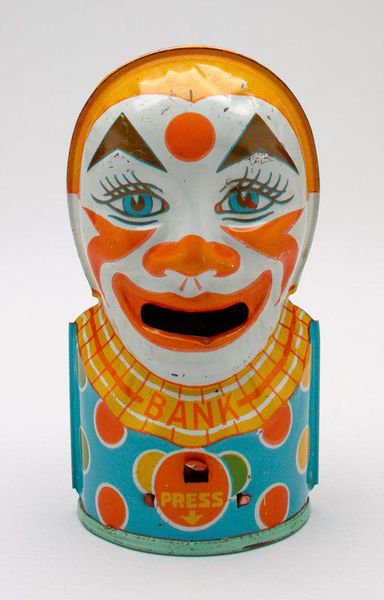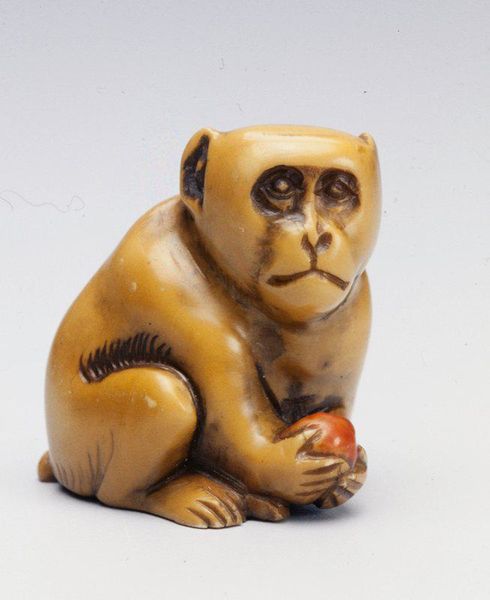
sculpture, resin
#
kitsch
#
figuration
#
sculpture
#
naïve-art
#
united-states
#
decorative-art
#
resin
Dimensions: 8 11/16 x 5 5/16 x 5 9/16 in. (22.07 x 13.49 x 14.13 cm)
Copyright: No Known Copyright
Curator: Oh, goodness, look at that face! It's like a bizarre fever dream, or something ripped from the pages of a mid-century advertisement. Editor: That's quite an initial reaction! Let me introduce our listeners to Thomas M. Imswiler's "Penny Pineapple Bank" from 1960. The Minneapolis Institute of Art houses this piece of decorative art made from resin. It certainly is… striking. Curator: Striking is one word for it! The wide, unblinking eyes, the bright, garish colors, the implied motion—it's almost aggressively cheerful. How does such a thing come into being? Editor: It speaks to an era. Mechanical banks, often kitsch objects like this, were incredibly popular in mid-century America. They reflected both a rising consumer culture and, perhaps, a certain naivete about finances. Note the 50th anniversary star badge he is sporting. Curator: It's like a symbol of unbridled capitalist enthusiasm made manifest. The pineapple is an odd choice for a bank. What were they symbolizing then? Editor: Pineapples often signaled hospitality and welcome, so there is a strange disconnect to the bank function. Placing coins inside it transforms him, essentially, into a symbol of consumption. One could argue that it speaks to the way individuals, particularly children, are encouraged to participate in the system. It certainly brings a strange twist of innocence and capitalist training. Curator: True, its message can also suggest financial success through hard work and proper saving, which is perhaps a good ideal to suggest for children, albeit done here in such an exaggerated form. It would be fun to analyze popular banks and economics lessons marketed in mid-century America to try and discern specific economic or even political beliefs they tried to normalize to the younger generations. Editor: Agreed. It is quite easy to look past an object of supposed "kitsch", yet these seemingly innocuous works contain profound reflections on identity, economy, and class in American society. Curator: Absolutely. These artifacts were created during distinct historical, social, and institutional conditions, but still prompt a dialogue about contemporary ideas and the long-lasting effects of the imagery of our past. Editor: Indeed. These decorative items continue to give voice to both American optimism, yet can provide stark political lessons, that are anything but simple or decorative.
Comments
No comments
Be the first to comment and join the conversation on the ultimate creative platform.
